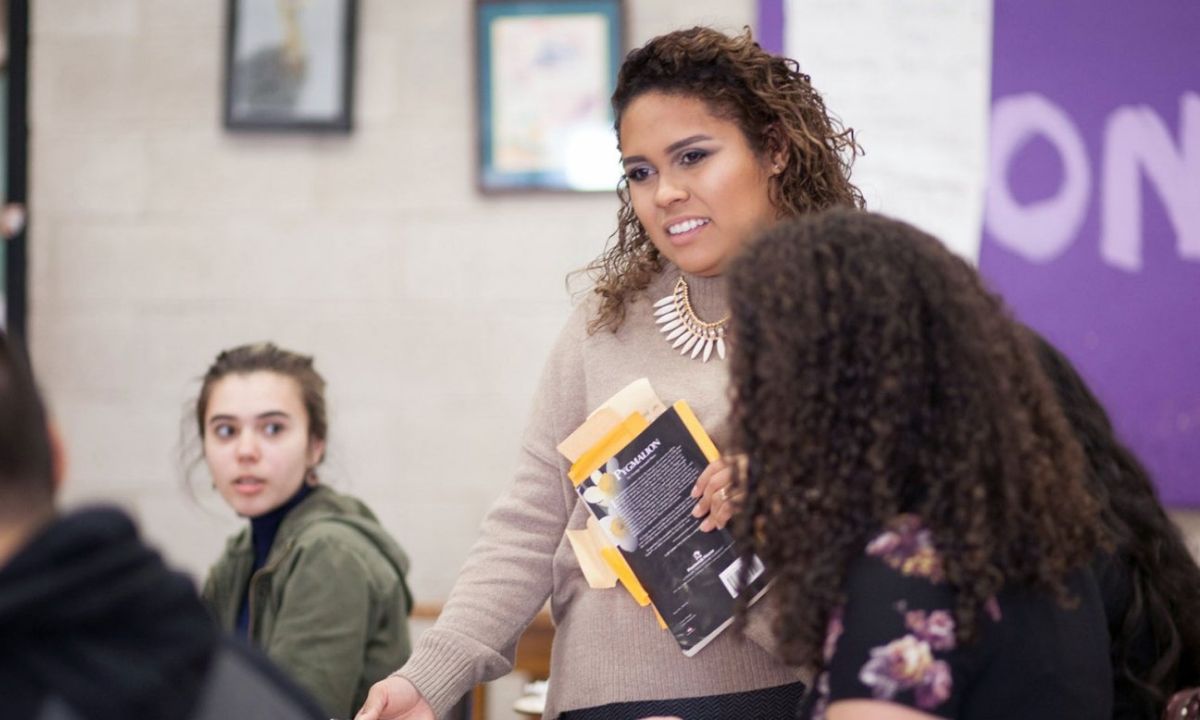How Rhode Island College Went to the Head of the Class on Reading Instruction
Nationally-known program receives an ‘A+’ by fostering collaboration between general and special education methods.

Get stories like this delivered straight to your inbox. Sign up for The 74 Newsletter
In its 2016 state-by-state, college-by-college Teacher Prep Review, the National Council on Teacher Quality branded the reading preparation program at Rhode Island College (RIC) with an “F.”
Then, in 2023, the Review gave it an “A+.” A meteoric change.
The council has been assessing teacher-preparation programs nationally since 2000. Its evaluations are controversial and often dismissed as out of touch with what teacher prep programs were actually doing. Well, yes. The council has long condemned the now debunked Balanced Literacy approach to reading instruction as outright harmful, even though it dominated higher education’s prep programs for 50 years. Instead, its evaluation criteria judges programs according to the five science-based elements novices need to become competent reading teachers.
To be fair, the University of Rhode Island got an “A.” But today is about the “A+” story. What happened in the relatively short time between “F” and “A+”?
Recently, in a conference room at RIC, I put that question to Associate Professor Cara McDermott-Fasy (special education) and Associate Professor Carolyn Obel-Omia. (Interim Dean Carol A. Cummings and Interim Associate Dean Beth Pinheiro were also there.)
RIC’s transformation story starts slowly. Around 2009, the reading professors began refining their coursework with more science-based lessons, in effect seeding what will become fertile curricular soil. “We didn’t feel like we were jumping on a bandwagon or letting go of anything,” like Balanced Literacy, Obel-Omia said. “We were just building our competencies.”
McDermott-Fasys has chronicled the journey of how RIC worked with various partner organizations toward “shared responsibility between general education and special education.” Together, they broke down silos that too often led to the need for “specialized language schools [which] in our area often had no seats available.” (And cost a fortune.)
Mending the division between general and special education led to the realization that a successful revamp of their reading program would hew to the needs of the dyslexic population. What works for them, works for all kids.
Together they studied a multi-tiered support system that teaches educators to chart and monitor struggling students. This framework can apply to all subjects, and problematic behavior, by sorting skills and remediation, in this case for reading, into three tiers of intensifying personalized support:
Tier I is for all kids, the general education that builds foundational skills. Tier II are intervention techniques for those showing signs of struggling. Tier III is for students whose special needs lie beyond the capacity of a regular classroom teacher, like those with serious dyslexia.
But RIC’s reading redesign folks wanted more. In 2016, they began working with the CEEDAR Center on their Innovations Configuration protocol.
They identified what RIC graduates should know and be able to do to support all their students, whether they had special needs or not. Then the program redesigners took a microscope to their curriculum looking for redundancies, gaps and opportunities.
Proficient reading requires many skills to come together. Glitches in any one of those skills can screw up a kid’s progress. For example, the inability to hear the distinction between the sounds that make up words will leave the kid entirely in the dust. Thus, a course of study must teach novices to:
Provide an aligned sequence of all the necessary skillsHave assessments that flag problemsBe equipped with techniques that ameliorate or resolve those problems.
The professors broke down their courses into units that could be mapped. What was actually being taught? In what order? With what intensity? The mapping laid bare previously unseen details of their curriculum. Some competencies seemed randomly spread across the four courses already designated for teaching reading.
The shocker: finding few early intervention units (Tier II). If kids are struggling with general education, what are available methods of getting the kid back on track before turning to specialists? And whose responsibility are early reading problems, the classroom teacher or special educators? The redesign team decided that responses to early red flags should be shared by both.
So they reorganized the content into four new, well-aligned courses. Two classes focus on the foundational skills. But a new, dedicated intervention course equips all teachers to help a child starting to struggle. The specialists still have their specialized training, but now they also take a general education course so everyone shares an understanding of the spectrum from general to special education.
The philosophy of the elementary department changed from “my course” to “our scope and sequence,” McDermott-Fasy proudly told me.
When Rhode Island’s 2019 Right to Read Act passed, RIC compared its demands with the newly-aligned program. They were in superb shape. The state approved their program in 2023, the same year the council gave them the “A+”.
The National Council on Teacher Quality’s new how-to guidance document estimates that with effective instruction, over 90% of students would learn to read without needing specialist attention.
Rhode Island has about 10,000 4th graders, of whom roughly 3,300 kids were proficient in the 2023 RICAS English Language Arts state test. As new and improved teachers emerge from Rhode Island’s public prep programs, they’ll join the existing classroom teachers also learning science-backed techniques.
In the fullness of time, we could have 9,000 proficient 4th-grade readers, prepared for academic success and a better shot at thriving in their lives.
Rhode Island Current is part of States Newsroom, a nonprofit news network supported by grants and a coalition of donors as a 501c(3) public charity. Rhode Island Current maintains editorial independence. Contact Editor Janine L. Weisman for questions: info@rhodeislandcurrent.com. Follow Rhode Island Current on Facebook and Twitter.
Get stories like these delivered straight to your inbox. Sign up for The 74 Newsletter

;)